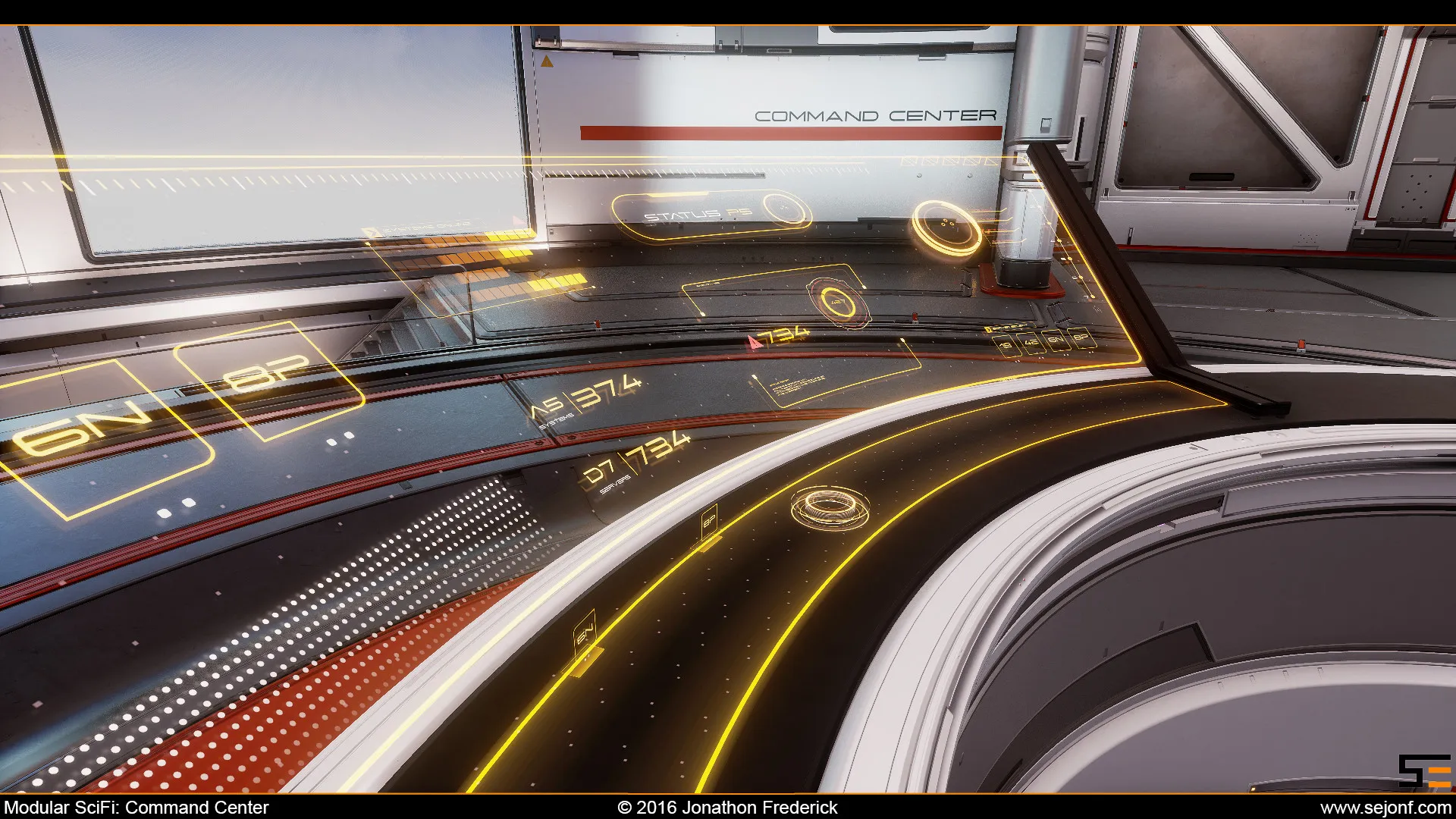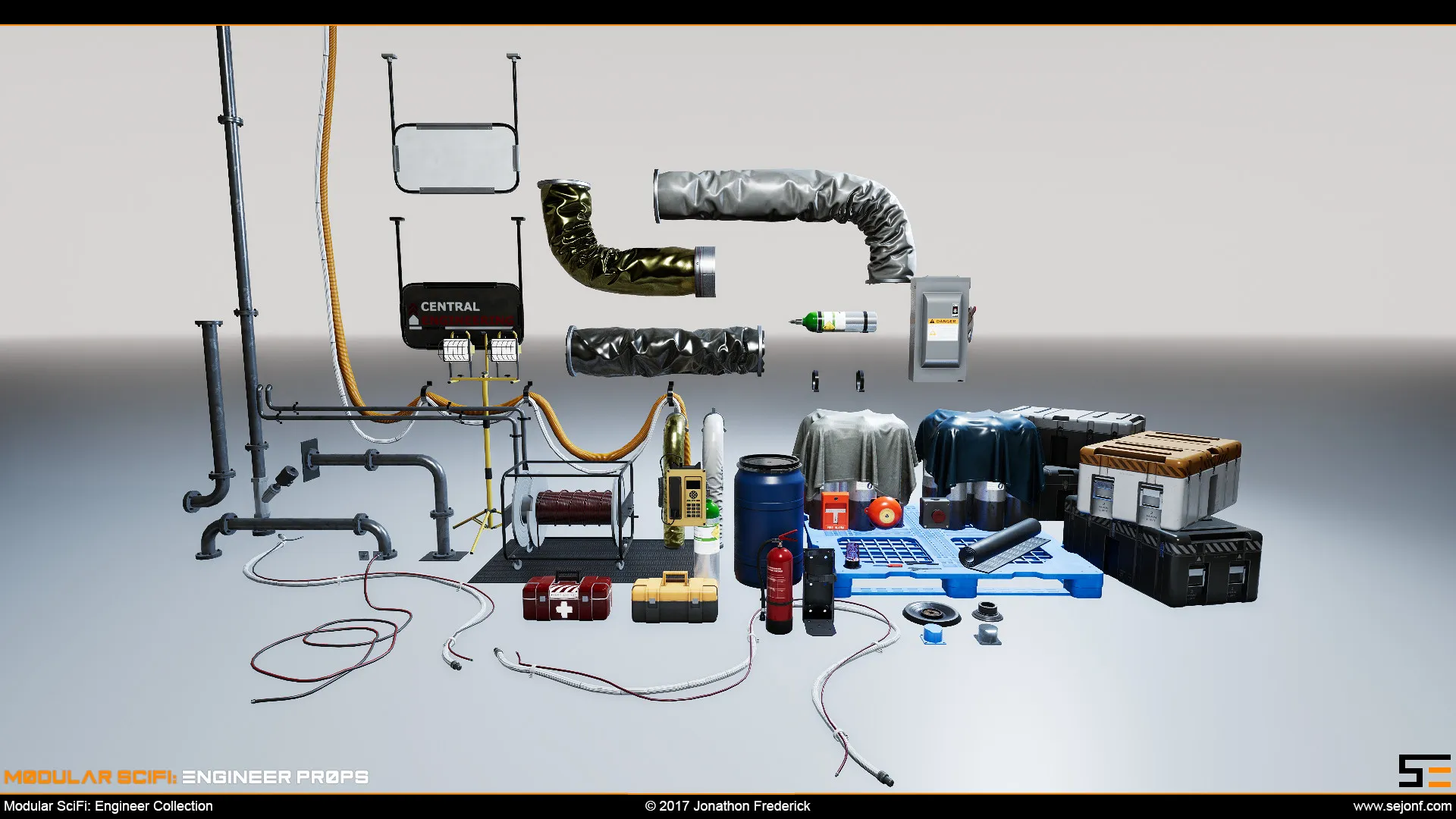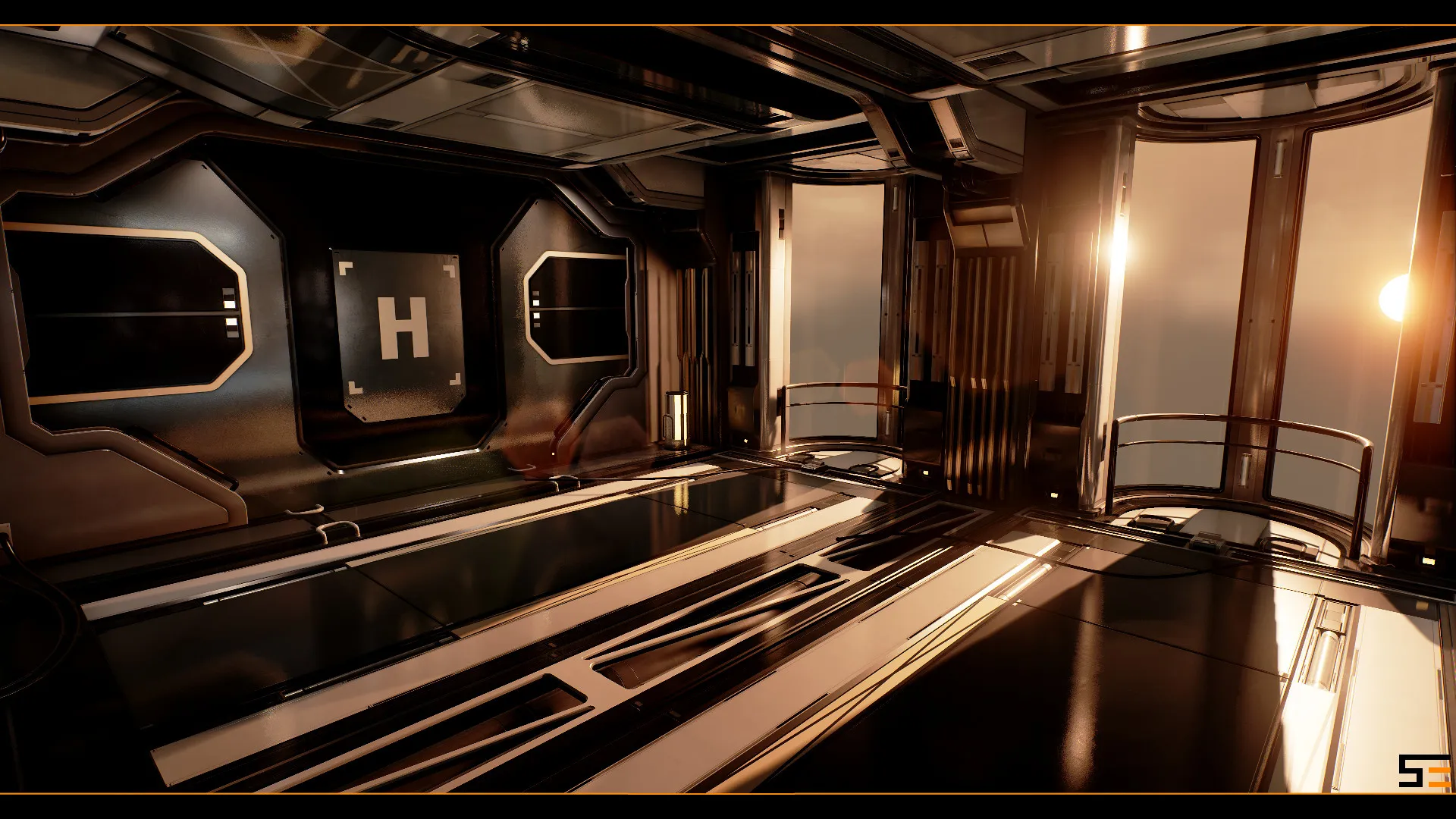Creating Stunning Sci-Fi Environments in Unreal Engine 4
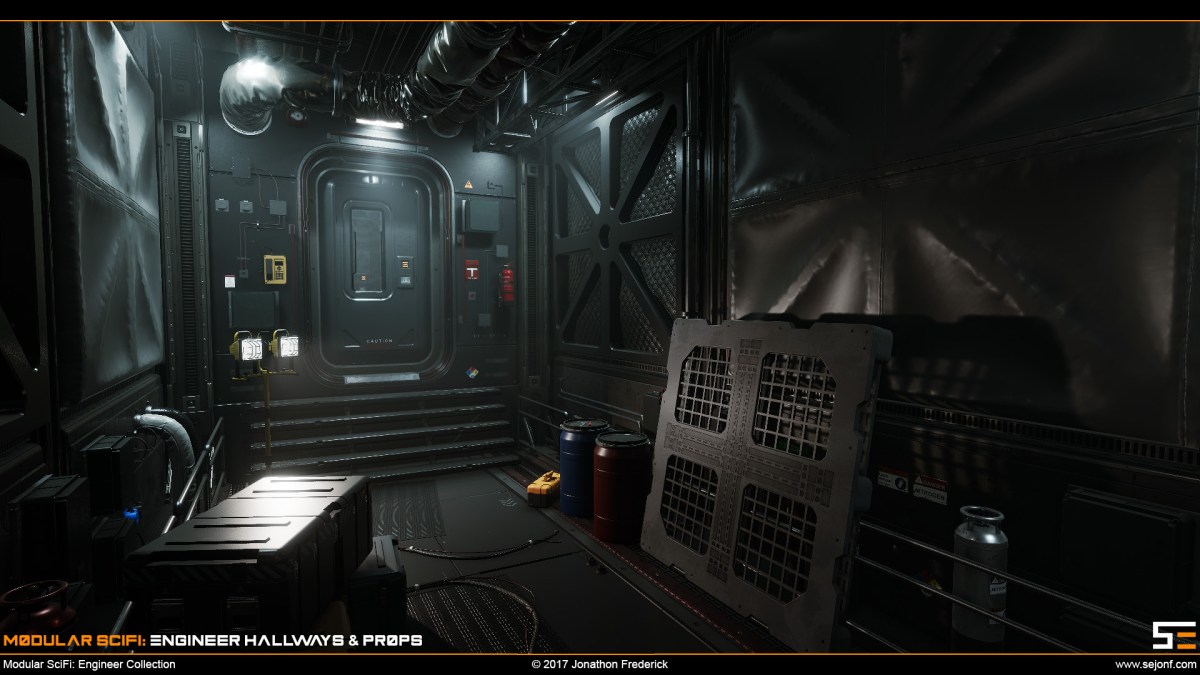
Unreal Engine 4 marketplace creator Jonathon Frederick shares an in depth overview of his workflow and his general inspiration for creating breathtaking modular Sci-Fi environments.
The Catalyst for Working In 3D
I would say the biggest catalyst for my interest in 3D was the Unreal Tournament series. I’ve always wanted to make 3D games, but Epic’s modding tools were a way for me sort of break into that workflow and figure things out on my own. I spent a lot of years just learning as much as I could, following tutorials, doing trial and error, etc.—until I came to a point where I was comfortable with my abilities.
Influences and inspirations vary greatly. It can be something I see in a movie, TV or real life. Games are another big influence. Some of my earlier inspirations included Halo and Mass Effect. Things like modern printers for example also have interesting shapes and details. Recently I’ve taken inspiration from some real life sources such as submarine interiors, as well as the latest Call of Duty and their incredible Sci-Fi setting. Another big source for me is artwork or photos with very atmospheric lighting. That can inspire me to create a specific scene or look for my assets.
Maya vs. 3DS Max for Environments
I sort of gravitated towards Maya due to the ease it took to learn it. I took interest in 3D around the time I picked up Unreal Tournament 2004. I don’t remember if it was the game, or a physical unreal editor book that came with Maya PLE and I would just play around in there trying to recreate things I had seen.
Around that time, I noticed a lot of the top devs and modders were using Max, but I could never get past the intimidating interface and seemingly difficult approach to modeling, as opposed to Maya’s more straight forward methods. It just seemed easier to create something in there as opposed to Max. That, and I’ve been informed there is no equivalent to the G key (repeat command) in Max. I’ve grown quite fond of that functionality.
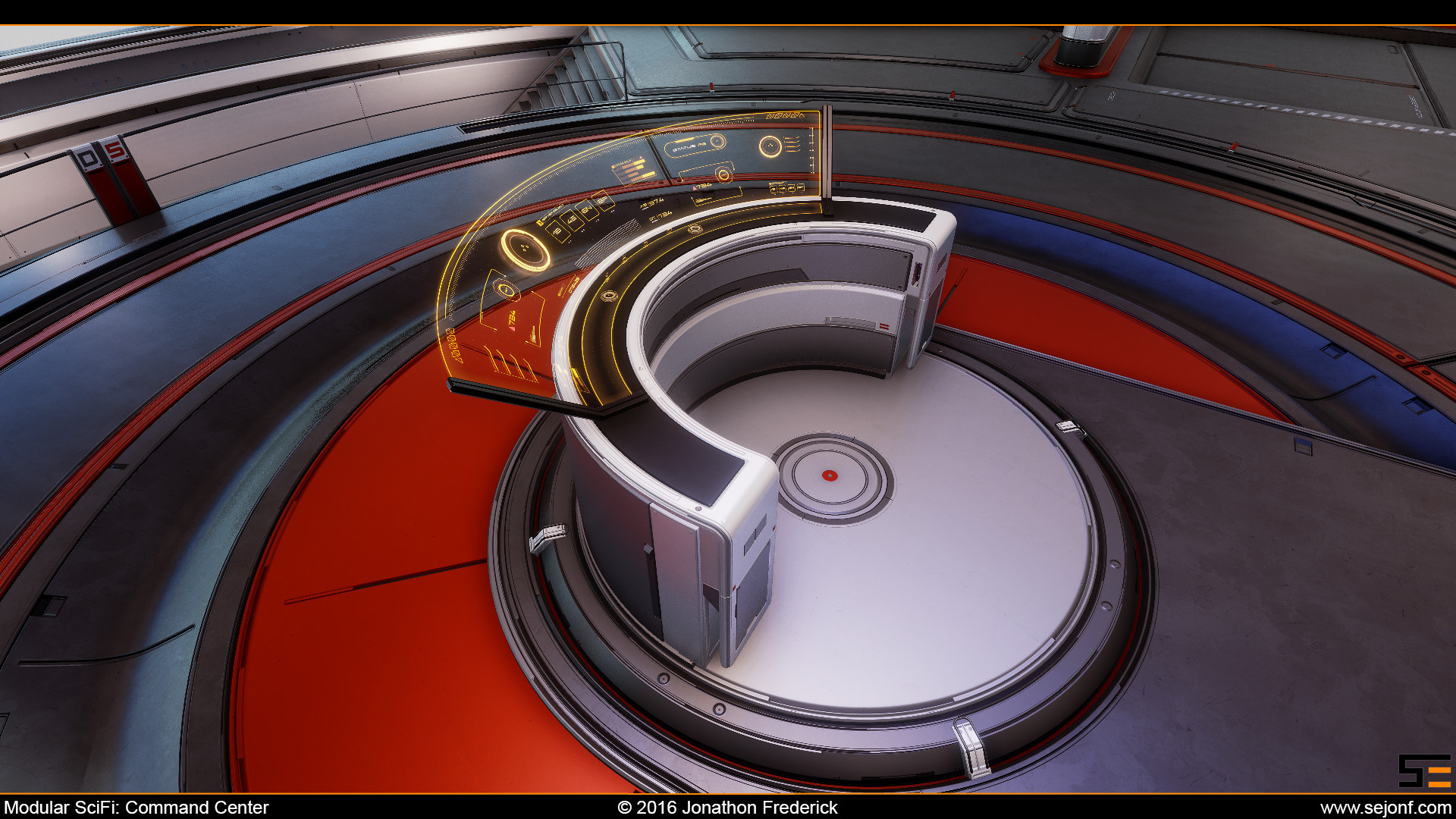
Which part of the set do you decide to model first?
With the Engineer themed assets, I actually modeled both the Hallway and Interiors content together. This way I could ensure everything fits together as perfectly as possible. Once I’ve finished the UV/Texture work on the Interiors portion set, I plan to create the exterior assets to tie it all together.
Trim Sheets for Detailed Panel Work
Ever since Command Center, I’ve been using an interesting trim sheet method that I learned from watching Alex Senechal’s gumroad tutorials. This allows me to create assets that look baked, while making use of the same texture. I highly recommend anyone interested in mixing two UV sets via trim sheets to print normal detail to give his tutorial a look!
Recommended Maya Scripts
I’ve recently come across Ktools but other than that, I just use the vanilla program for my modeling.
References
I look at a lot of photo references and sort of eyeball it. In my experience, it’s a little more efficient than tracing over the photo in the viewports.
Lighting Value Functionality
I’m a real big fan of lighting. Things that are very ambient and convey some sort of atmosphere. Whether it’s dimly or fully lit, it really helps to generate the feel of an environment. Whenever I’m creating an environment pack, it’s hard to settle on one lighting/post processing combo which is why I tend to include a few more. My Hallways pack is a perfect example of that. I think I have like 5 different example maps with different lighting setups.
My favorite from that pack is the one shown in the thumbnail, where all the lights are turned off in one end of the corridor and the natural sunlight is shining through. With the recent addition of volumetric fog, that opens up even more possibilities going forward. I was able to play with that a little in a promo shot showing off Engineer Hallways and Props together.
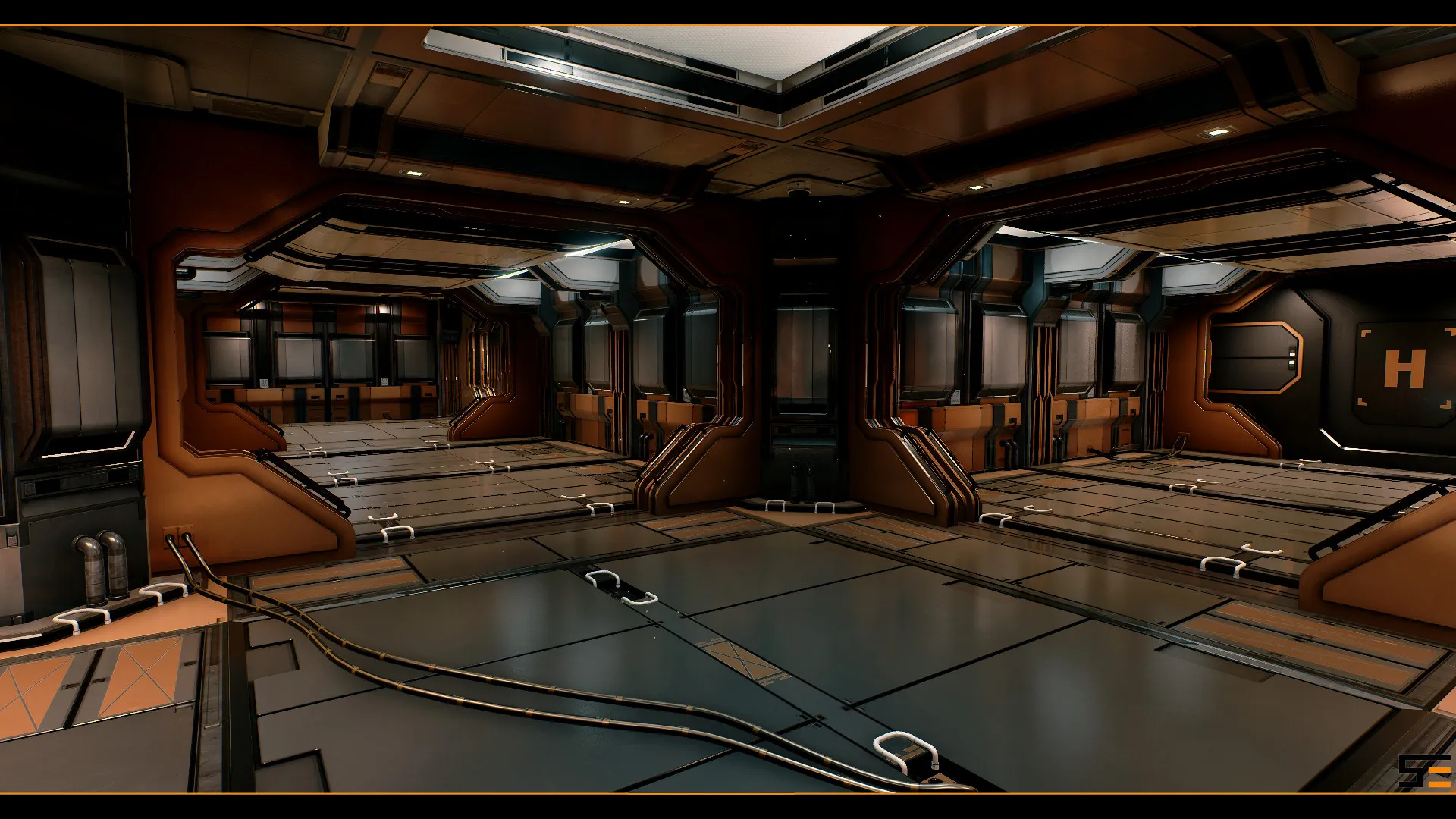 Functional Sci-Fi Door Design
Functional Sci-Fi Door Design
I had only created one door/doorway combo thus far and I wanted to not only provide a new one for buyers to use, but one that wasn’t large as the first. I looked at a lot of references, including submarine doors and some of the doorways in the International Space Station (which was another influence on the Engineer assets overall).
Doors are some of the most difficult props to do in my experience, simply because it can be challenging to get something that you’re overall satisfied with. It’s a significant piece in an environment and shouldn’t be too distracting or detract from the design as a whole. The door I made went through several iterations before I was content with the look.
Steam Particles and Volumetric Fog
The volumetric fog isn’t included in Engineer Hallways since it wasn’t added until 4.16, and the base version for the pack is 4.15. I’ve setup a scene with both of the Engineer products in 4.16 and posted screenshots on ArtStation demonstrating the effect. When the door moves and the lighting comes in from whatever environment is behind it, it can affect the volumetric fog. Aside from that, there is a subtle steam particle effect that plays when the door opens that is available in the vanilla pack.
Inspiration for the Custom Ice Shader
I have played games like Mass Effect: Andromeda, Dragon Age: Inquisition or Call of Duty: Infinite Warfare and noticed their beautiful ice shaders. Winter environments were going to be integral to a project of mine, and I wanted to incorporate a similarly stunning shader for ice. I couldn’t find anything on the marketplace or elsewhere that looked identical so I took to creating my own. It went through a few iterations before I settled on the look that I liked. I was going for a particularly crystallized feel for the ice – something that looked chaotic, but beautiful at the same time.
The ice shader can be implemented anywhere really. Applied to a landscape, or terrain meshes. Thus far I’ve integrated it into the collection environment to simulate the frozen lake upon which the facility is located.
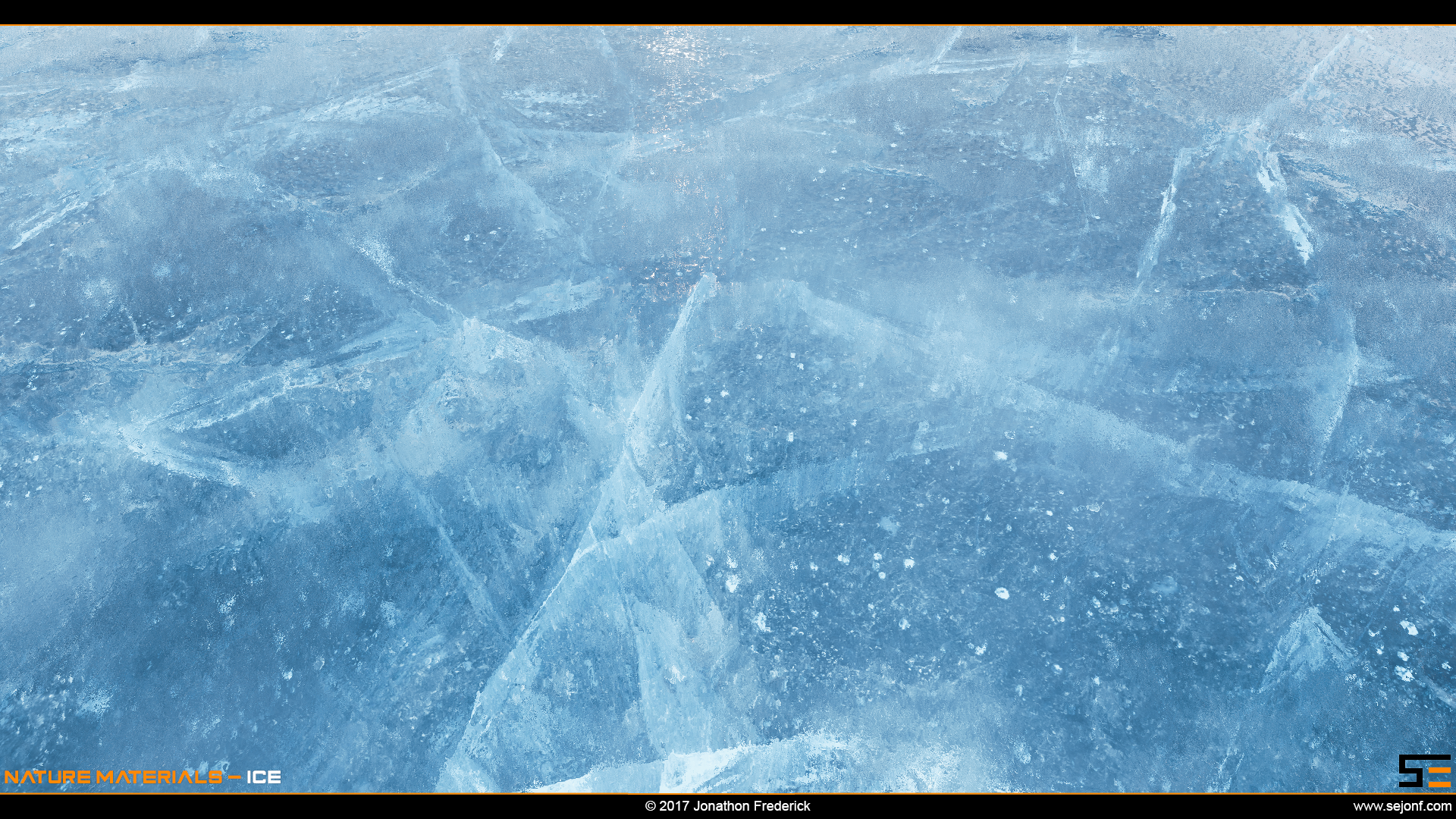 Favorite UE4 Engine Games
Favorite UE4 Engine Games
Hellblade: Senua’s Sacrifice is probably one of the biggest examples of the power of UE4 to date. I also feel that Injustice 2 provides a perfect example of the great graphics, animation and gameplay experience Unreal Engine 4 is capable of. Epic’s own title Paragon is another. I haven’t had much free time to keep up to date with all of the incredible works that people are making with UE4, indies or AAA, but I’m sure there are many more than those that came to mind.
Favorite Sci-Fi Films
Films are incredible sources of inspiration. Some influences that I can think of include Edge of Tomorrow, The Martian and Prometheus. Also The Expanse, while not a film, is another.
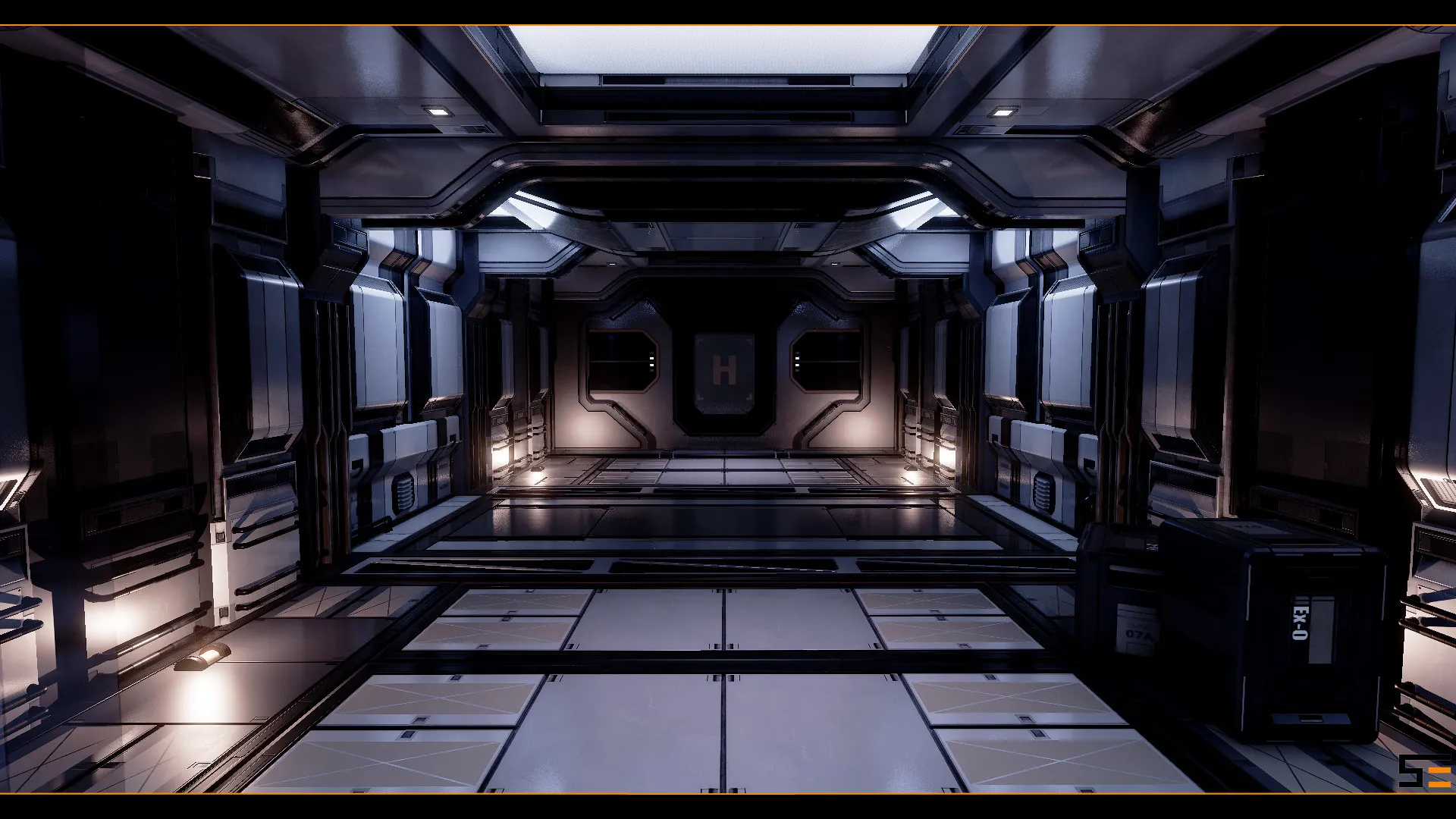 Advice for those New to UE4
Advice for those New to UE4
My advice would be to persevere. One thing that I find a lot of people tend to do is expect to make high quality environments as soon as they begin. It takes time, patience and planning to get to that point. And even once you’ve acquired the skills, remember that the initial phases of environment design aren’t ever going to look pretty. Stick it out, and keep working on it until all the pieces come together to form one final composition.
Insiders working within the gaming industry have sometimes claimed there is tension between character artists and environment artists, each claiming that their work is the most significant portion of the pipeline. What do you think?
While I haven’t worked In the game industry at a studio myself, I can say that it’s a little erroneous to imply any element of the development process is more significant to the other. Games are a culmination of many pieces. It would be like arguing whether the bun or the beef is more significant on a hamburger. Without either of those two, you wouldn’t really have one. It’s the same in my view with games. Elements such as environment art, programming, character art, sound design, music, voice acting, etc. are all a necessity to form the final composition of a game. Everyone has something vital to contribute.
